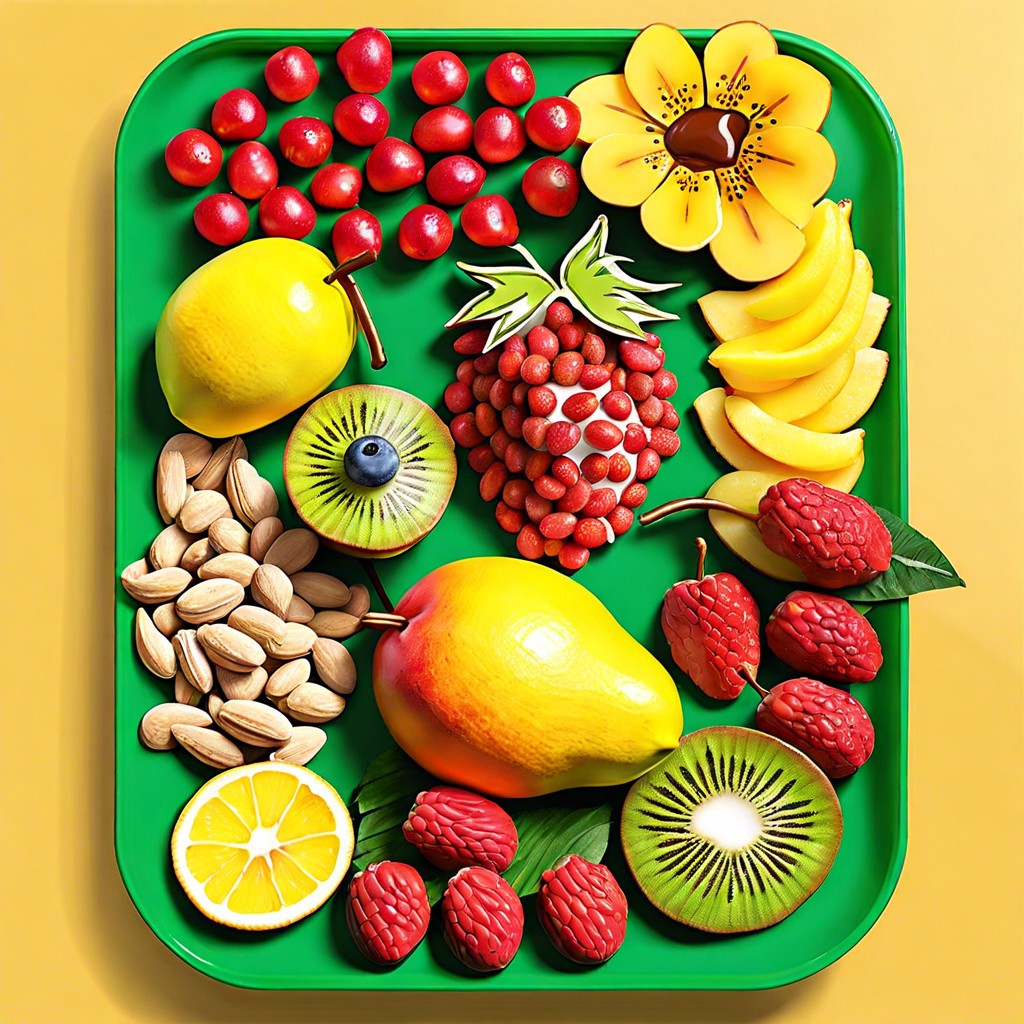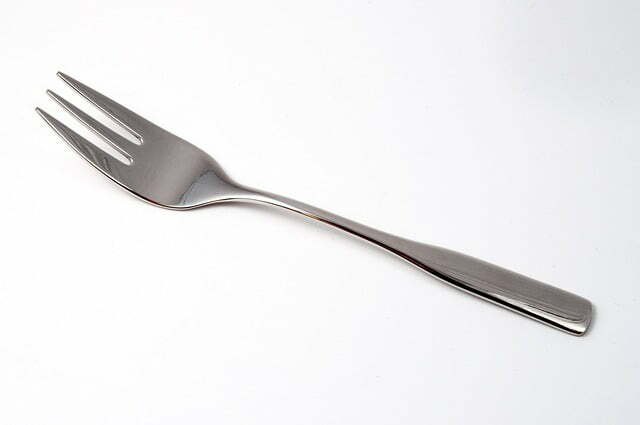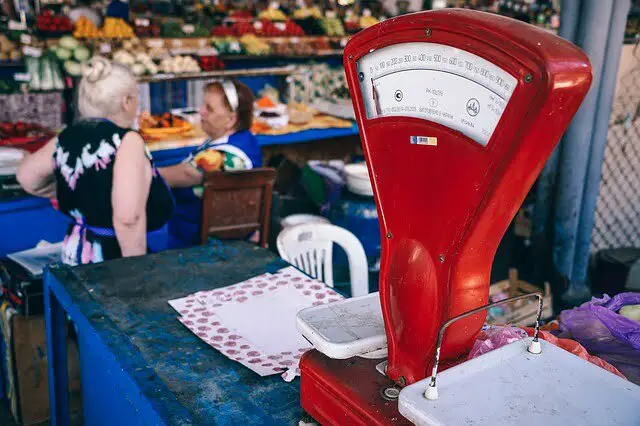Appetizer plates are typically 5 to 7 inches in diameter.
Appetizers are a great way to kick off any meal or party, and having the right size plates can make all the difference in presentation and portion control. But have you ever found yourself wondering, “What size are appetizer plates?” It may seem like a simple question, but the answer can vary depending on the type of appetizer and your personal preferences.
In this article, we’ll dive into everything you need to know about appetizer plate sizes so you can serve up your delicious bites with confidence.
Standard Appetizer Plate Sizes

This size is perfect for serving small bites and hors d’oeuvres that are meant to be eaten in one or two bites. The smaller plate also helps with portion control, ensuring that guests don’t fill up on appetizers before the main course.
However, there are some exceptions when it comes to standard sizes based on cultural differences and personal preferences. For example, Asian cuisine often features smaller portions of food served on even smaller plates than traditional Western-style appetizer plates.
It’s important to keep in mind what type of food you’ll be serving when choosing your plate size. If you’re planning a cheese platter or charcuterie board as an appetizer, larger plates may be necessary for presentation purposes.
Different Shapes of Appetizer Plates
The shape of your plate can also impact how your food is presented and enjoyed. While round plates are the most common choice for appetizers, there are other shapes that can add a unique touch to your presentation.
Square or rectangular plates offer a modern look and work well for bite-sized foods like sushi rolls or bruschetta slices. Triangular-shaped plates provide an interesting visual element and can be used for items like mini quesadillas or stuffed mushrooms.
For those looking for something more whimsical, heart-shaped or flower-shaped dishes may fit the bill. These shapes work particularly well with desserts such as petit fours or fruit tarts.
Ultimately, choosing a plate shape depends on personal preference and what type of food you plan on serving.
Material Options for Appetizer Plates
Ceramic plates are a classic choice that can add elegance and sophistication to any table setting. They come in various shapes and sizes, making them versatile for different types of appetizers.
Plastic plates may not be as fancy as ceramic ones, but they offer convenience and affordability. They’re perfect for outdoor events or casual gatherings where you don’t want to worry about broken dishes.
Paper plates are another affordable option that’s great for large parties or events with lots of guests. While they may not be the most environmentally friendly choice, they do make cleanup quick and easy.
No matter what material you choose, it’s important to keep in mind how well it will hold up against food stains or spills. Some materials like plastic or paper may not be able to withstand hot foods without warping or melting.
Ceramic Appetizer Plates
They come in various shapes and sizes, making them versatile enough to serve any type of appetizer. Ceramic plates also retain heat well, keeping your food warm for longer periods.
One of the best things about ceramic plates is that they can be customized with unique designs or patterns to match your personal style or event theme. You can find hand-painted options that add an extra touch of sophistication to your table setting.
When it comes to cleaning ceramic plates, they are dishwasher safe but should be handled with care as they may chip if dropped on hard surfaces. With proper care and maintenance, these beautiful pieces will last you many years.
Choosing the right size and material for your appetizer plate depends on personal preference and occasion type.
Plastic Appetizer Plates
They come in various shapes, sizes, and colors to fit any occasion or theme. Plastic plates are also lightweight and durable which makes them perfect for outdoor events such as picnics or barbecues.
One of the biggest advantages of using plastic appetizer plates is that they can be easily disposed of after use. This means less time spent on cleaning up after your event! many brands offer eco-friendly options made from recycled materials.
When choosing plastic appetizer plates, it’s important to consider the quality of the material used. Look for BPA-free plastics that won’t leach harmful chemicals into your food.
Paper Appetizer Plates
They come in a variety of sizes, shapes, colors, and designs that can match any theme or style. Paper plates are also lightweight and easy to dispose of after use, making them ideal for outdoor events or large gatherings.
One advantage of paper appetizer plates is that they can be customized with logos or personalized messages for corporate events or special occasions like weddings and birthdays. Some companies even offer eco-friendly options made from recycled materials.
However, it’s important to note that paper appetizer plates may not be as sturdy as ceramic or plastic ones. They may bend under the weight of heavier foods like meatballs or mini quiches if not properly supported by napkins underneath.
When choosing paper appetizer plates, consider the size needed based on the type of food being served. Smaller bites like cheese cubes may only require 4-inch diameter plate while larger items such as sliders might need up to 7 inches in diameter.
Plate Color and Design Choices
While white is a classic choice for any type of dish, there are plenty of other options available that can add some personality and flair to your table setting.
For example, you might opt for bold colors like red or blue to create a vibrant look that catches the eye. Alternatively, you could choose pastel shades like pink or mint green for a softer touch.
Some people even prefer black plates as they provide an elegant backdrop against which colorful foods stand out.
Designs also play an important role in plate selection. You may want something simple with just one solid color or perhaps something more intricate with patterns such as stripes or polka dots.
There are also themed designs available such as floral prints perfect for springtime events.
Unique Colors for Appetizer Plates
If you’re looking for something that will really make your appetizers pop, consider opting for a plate in an unexpected color. For example, bright jewel tones like emerald green or sapphire blue can add a touch of elegance and sophistication to your presentation.
Alternatively, if you’re going for a more playful vibe, pastel shades like lavender or baby pink can be fun and whimsical.
Another option is to go with metallics like gold or silver which can give off an air of luxury while still being versatile enough to work with any type of cuisine. And don’t forget about black! A sleek black plate provides the perfect backdrop for colorful bites such as sushi rolls or bruschetta.
Modern Prints On Appetizer Plates
From geometric patterns to abstract designs, there are endless options available that can complement any occasion or theme. These plates come in various shapes and sizes, so you can choose the perfect one for your needs.
If you’re hosting a modern-themed party or event, consider using appetizer plates with bold graphic prints like chevron stripes or polka dots. For a more sophisticated look, opt for minimalist designs such as simple lines or subtle textures.
When it comes to color choices for modern print appetizer plates, black and white combinations are always popular because they provide an elegant contrast that works well with any decor scheme. However, if you want something more vibrant and eye-catching then go for bright colors like reds blues greens yellows etc., which will make your food pop off the plate!
Holiday-Themed Designs
Whether you’re hosting a Christmas party or celebrating Halloween, there are plenty of options available. For example, you can find appetizer plates with snowflakes and reindeer for the winter holidays or pumpkins and ghosts for Halloween.
If you’re looking for something more subtle, consider choosing an appetizer plate in a holiday color like red or green. You could also opt for metallic accents like gold or silver that give off a celebratory vibe without being too overtly themed.
When selecting holiday-themed designs on your appetizer plates, it’s important to keep in mind the occasion and who will be attending. If it’s an adult-only gathering, feel free to go all out with bold colors and playful patterns; however if children will be present at the event then choose age-appropriate themes that they would enjoy as well.
Occasions for Using Appetizer Plates
They’re perfect for formal events like weddings, where guests can enjoy bite-sized hors d’oeuvres while mingling with others. Appetizer plates also work well at cocktail parties, where they allow guests to sample different types of finger foods without committing to a full meal.
But appetizer plates aren’t just limited to fancy events; they’re great for casual gatherings too! Hosting a game night or movie marathon? Serve up some popcorn or chips on small appetizer plates so your guests can snack without making a mess.
Another occasion that calls for the use of appetizer plates is during holiday celebrations such as Thanksgiving and Christmas dinners. These festive occasions often involve large meals with multiple courses, so using smaller sized dishes allows you to serve more food options without overwhelming your guests.
Whether it’s an intimate dinner party or large-scale event, having the right size plate will make all the difference in presentation and guest satisfaction.
The Difference Between Appetizer and Dinner Plates
Appetizer plates are smaller than dinner plates and typically range from 5 to 7 inches in diameter. Dinner plates, on the other hand, can be anywhere from 9 to 12 inches or more.
The difference in size is not just for aesthetic purposes; it also serves a functional purpose.
Appetizers are meant to be small bites that whet your appetite before the main course arrives. They’re designed as an introduction or teaser of what’s yet to come and should not fill you up entirely before the main meal arrives.
Dinner plates are larger because they need enough space for a full serving of food along with sides like vegetables or potatoes without overcrowding them on one plate.
The Difference Between Appetizer and Lunch Plates
One common question is how appetizer plates differ from lunch plates. While both types of plates are smaller than dinner plates, they do have some distinct differences.
Lunch plates typically range in size from 8 to 9 inches in diameter and are used for serving light meals or sandwiches. They’re larger than appetizer plates but still smaller than dinner-sized ones.
Appetizer dishes, on the other hand, tend to be much smaller and more compact – usually around 5-7 inches in diameter – making them perfect for bite-sized snacks like cheese cubes or mini quiches.
It’s important to note that while these two types of dishes may look similar at first glance, their intended uses can vary greatly depending on the occasion and type of food being served.
The Difference Between Appetizer and Dessert Plates
Appetizer and dessert plates are two types of dishes that are often confused with each other due to their similar sizes. However, there is a difference between the two.
Appetizer plates typically range from 5-7 inches in diameter and are used for serving small portions of food before the main course. They can be used for finger foods like cheese cubes or bruschetta or even mini versions of entrees like sliders.
Dessert plates, on the other hand, tend to be slightly smaller than appetizer plates at around 4-6 inches in diameter. These dishes serve as a vessel for sweet treats such as cakes, pies or ice cream after dinner.
While both types of plate may look alike at first glance they have different purposes when it comes to dining etiquette and presentation style.
Pairing Food With Plate Sizes
For example, smaller plates work well for bite-sized appetizers like sliders or mini quiches. Larger plates are better suited for more substantial appetizers like stuffed mushrooms or bruschetta.
It’s also important to consider the overall presentation of your dish when choosing a plate size. If you’re serving up an elegant seafood cocktail, a small and delicate plate will help showcase the dish’s sophistication and refinement.
On the other hand, if you’re going for a more rustic look with your charcuterie board or cheese platter, larger wooden boards can be used in place of traditional plates to create an inviting and casual atmosphere.
Ultimately though, there is no hard-and-fast rule when it comes to pairing food with plate sizes – experimentation is key! Don’t be afraid to mix things up by using unconventional dishes (like mason jars) as serving vessels or playing around with different color combinations on your table setting.
Customizing Appetizer Plate Size
Many ceramic and pottery studios offer the ability to create your own plates with specific dimensions. This can be especially useful if you have unique appetizers that require a certain shape or size of plate.
Another way to customize your appetizer plates is by purchasing adjustable or modular sets. These sets typically come with multiple pieces that can be arranged in different configurations depending on the type of food being served.
When it comes to customizing, keep in mind that larger plates may not always be better. While it’s tempting to go for bigger sizes, remember that portion control is key when serving appetizers.
Stick within the standard range of 5-7 inches and adjust as needed based on the types of foods being served.
Care and Maintenance Tips
Proper maintenance will ensure your plates last for years to come. Here are some tips on how to care for your appetizer plates:
1. Hand wash: Most appetizer plates are not dishwasher safe, so hand washing is recommended.
2. Avoid abrasive cleaners: Use a gentle dish soap and avoid using abrasive sponges or cleaners that can scratch the surface.
3. Dry thoroughly: After washing, dry each plate with a soft cloth or let them air dry completely before storing.
4. Store carefully: When storing your appetizer plates, stack them carefully with padding in between each plate to prevent scratches or chips.
5. Check for damage regularly: Before using any plate again after storage check if there is any damage like cracks or chips which may cause harm while eating food from it.
Tips for Choosing the Right Size
First and foremost, think about the type of appetizers you’ll be serving. If you’re planning on serving small bites like olives or nuts, a smaller plate may suffice.
However, if you’re planning on serving heartier options like sliders or bruschetta with toppings that could easily fall off onto the tablecloth (or your guests’ laps), a larger plate may be more appropriate.
Another factor to consider is portion control. While it’s tempting to load up an oversized plate with all of your favorite snacks and nibbles, keep in mind that this can lead to waste and overindulgence.
Opting for smaller plates can help encourage moderation while still allowing guests to sample a variety of different flavors.
Lastly, don’t forget about aesthetics! The size of your appetizer plates should complement both the presentation of each dish as well as any other tableware or decor elements you have in place.
Alternatives to Appetizer Plates
One option is to use small bowls or ramekins for dips and spreads, which can be paired with crackers or sliced bread. Another idea is to serve your appetizers on wooden boards or slate tiles, which can add a rustic touch to your presentation.
For outdoor events like picnics and barbecues, consider using disposable options such as bamboo plates or palm leaf plates that are eco-friendly and biodegradable. You could also opt for reusable silicone mats that come in various shapes and sizes.
If you want an elegant touch without the expense of fancy dishes, try serving your appetizers on glass dessert cups or shot glasses. These vessels not only look beautiful but also allow guests to see all the layers of ingredients in each bite-sized portion.
No matter what alternative you choose for serving up your delicious bites at parties and gatherings – remember it’s all about creativity!
FAQ
What is the standard size of appetizer plate?
The standard size of an appetizer plate is typically 4 to 5 inches in diameter.
What size is a salad plate vs appetizer plate?
A salad plate measures about eight inches across, making it larger than an appetizer plate.
What are 7 inch plates used for?
7-inch plates are used for serving dessert items like cake and cookies, as well as salads and appetizers, providing an easy-to-hold size for patrons to mingle.
What size are small dessert plates?
Small dessert plates typically measure between 6 and 8 inches in diameter, with a recommended size of 6 to 7 inches for serving salad, fruit, or desserts.
How do appetizer plate sizes vary across different cuisines?
Appetizer plate sizes vary across different cuisines, typically ranging from smaller dishes in Japanese cuisine to larger sharing platters in Mediterranean and Middle Eastern cuisines.
What materials are commonly used for appetizer plates?
Commonly used materials for appetizer plates include ceramics, glass, porcelain, plastic, and wood.
Are there specific shapes or designs used for certain types of appetizers?
Yes, certain types of appetizers utilize specific shapes or designs to enhance their presentation and appeal.



